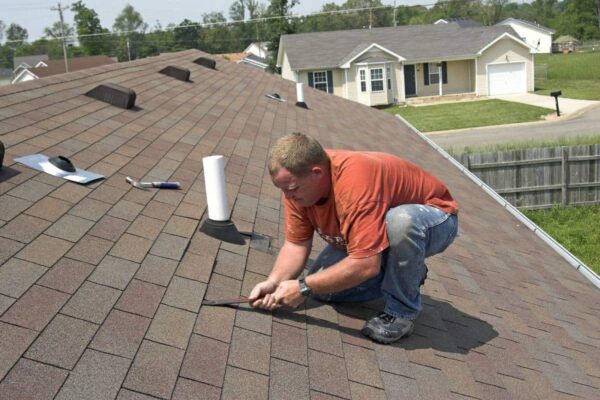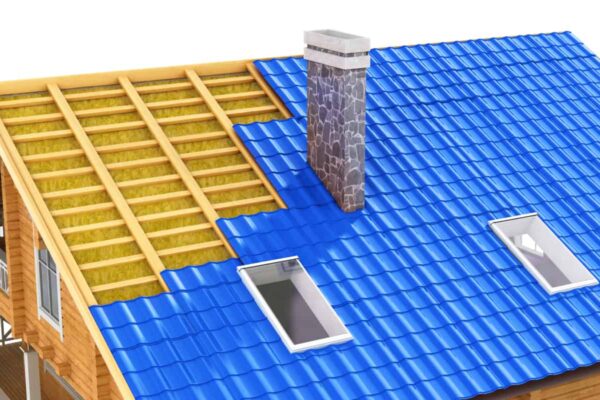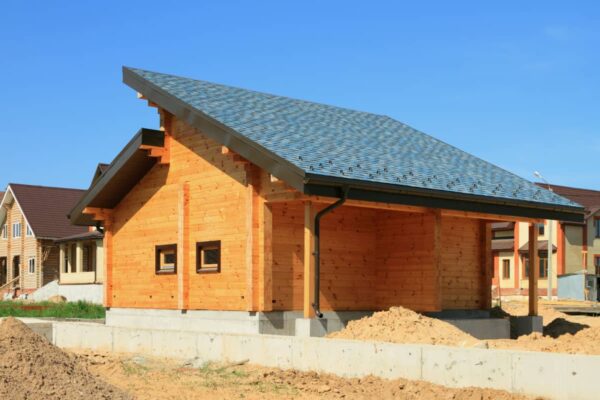Roofing underlayment refers to the material that lies underneath the shingles on a roof. The term also refers to the process of laying this material. Underneath the roof underlayment is the deck of the roof. Why do you need roof underlayment? Here we will go into five main points about the material and how it is important.
Roof Underlayment: Felt Type
Roof underlayment can be made of one of two materials. Either the material is made of felt or it is made of synthetic. Each material has its own benefits. Felt is not actually made of the common material known by its name, but rather by a combination of paper or fiberglass and asphalt. The material is made by taking paper fiberglass and completely saturating it with wet asphalt.
The result is a pliable material that is strong and resistant to moisture. It acts as a barrier between the roof deck and the shingles themselves. This gives an extra protection for the interior of your home from the elements.
What do you need to know when you go to the store to purchase felt underlayment? There are two types. You can purchase felt roofing in No. 15 or No. 30, the latter of which is stronger than the former. No. 30 is recommended for heavy duty jobs, especially if you live in an area where it snows a lot or there is risk of torrential storms.
What are the benefits of felt roof underlayment compared with synthetic? Felt is cheaper than synthetic if you’re on a budget. On the other hand, it does have its drawbacks. It dries out in the heat, which makes it less durable than synthetic. It is also considered to be not as strong as synthetic. Felt can’t be left exposed to the elements, because it will tear in the wind. It’s also harder to install because it’s slippery.
Roof Underlayment: Synthetic Type
Synthetic roof underlayment is made of synthetic materials, as the name implies. For this reason it is more resistant to moisture, making it durable and holding up against inclement weather. It is also lighter weight, so it is easier for the roofing contractors to work with. It will not wrinkle when it becomes moist, so the shingles will remain flat even in the wettest of weather.
Synthetic roofing underlayment is known to be more resistant to moisture and tougher against the elements. It is also less slippery than felt, so it is easier to install. The major drawback of synthetic roofing underlayment is that it’s far more expensive than felt roofing underlayment.
If you are looking to gain the benefits of this type of roofing underlayment, you need to be very careful that you have the proper budget to do so. You don’t want to end up in debt because you chose a type of roofing underlayment that you can’t really afford. You should consider all of these factors when choosing between felt and synthetic roofing underlayment.
Why is Underlayment Important?
The reason why underlayment is important is that it provides an extra barrier to weather. When there is a heavy downpour or extreme winds, the underlayment protects the interior of your home from the weather where the shingles may not. You simply couldn’t have an effective roof without roofing underlayment.
Your roofing underlayment isn’t just a second layer of protection, but it’s also a backup plan in case high winds tear off one of your shingles. Whereas this situation would leave you with a wet home without roofing underlayment, the material protects you from the torrential rain that usually comes with high winds in the case that a shingle or two blows off. Your home will stay dry inside.
If for some reason your roof contractor has to take a break in between laying all the shingles or spreads the work out over a couple of days, the interior of your home will be protected from moisture because he or she will have laid out roof underlayment. This will protect the roof deck from getting wet prior to all of the shingles actually being installed. It gives the contractor time to perform the job carefully instead of having to rush so that the roof deck doesn’t get wet. If you’re doing the job yourself, the same applies.
Where to Purchase Underlayment
You can purchase roofing underlayment online or from your local hardware store. You can buy it from a big box store like Home Depot or from a small hardware store like ACE Hardware. There are a number of different online vendors who specialize in roofing supplies. They will offer many different options for roofing underlayment. Professional contractors often receive their materials directly from manufacturers such as GAF, giving them higher quality options than what you might find at a retailer.
Talking to Your Contractor About Underlayment
If you are contracting a roofer to do the job, you need to discuss the underlayment with them in detail. You need to arrange a meeting to coordinate which supplies will be purchased for your roofing underlayment.
Make sure that your contractor is truly knowledgeable about the subject. Ask them questions that you know the answers to so that you can find out if they have the knowledge they need about roofing underlayment. For example, you can ask about the benefits of felt underlayment, and if the contractor goes over some of the points that we have, then you’ll know they are prepared to perform the job.
It is very important that your roof is installed correctly. It is a job that you will not want to have done frequently and should be done correctly the first time. You need to speak with your roofing contractor in depth in order to ensure that they are prepared to purchase the proper roofing underlayment for you and they are very experienced in the process of installing it. Draft up a formal spreadsheet of the supplies that you need, including which type of roofing underlayment you are requesting and from which company. Check with your hardware store or online vendor to make sure they supply it and allow ample time for it to arrive before your roofing contractor is set to install your roof.









